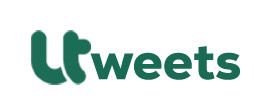18+ Trending Video| Watch Now: Husband Beat Wife To Death Because She Refused To Give Him H0t $ex.The Lagos State AIDS Control Agency has said no fewer than 120,000 people living with Human Immunodeficiency Virus in the state are currently receiving life-saving antiretroviral therapy, with a particular focus on children, adolescents, and other vulnerable groups. The Chief Executive Officer of LSACA, Dr Folakemi Animashaun, disclosed the figure and said about 80 percent had achieved viral load suppression. ...Tap To Read The Full Story Here | ..Tap To Read The Full Story Here...
She noted that this percentage reflects the state’s advancement towards achieving the Joint United Nations Programme on HIV/AIDS 95-95-95 target, affirming that Lagos had achieved the 95-100-80 target.
To help to end AIDS by 2030, UNAIDS established the 95-95-95 targets to ensure that 95 per cent of PLWH know their status, 95 per cent of people who know their status are receiving treatment and 95 per cent of people on treatment have achieved undetected viral load.
The LSACA CEO spoke at a press briefing on Friday to commemorate the 2024 World AIDS Day.
Animashaun explained, “In Lagos State, we have made remarkable strides in the fight against HIV. Through the combined efforts of government agencies, implementing partners, community stakeholders and the resilient people of Lagos, we have significantly advanced toward the UNAIDS 95-95-95 targets. These milestones reflect our commitment to a robust and inclusive HIV and AIDS response, giving us hope for a future free of HIV.
“Over 120,000 in Lagos State are currently receiving life-saving antiretroviral therapy, with a particular proposal for children, adolescents, and other under-represented groups,” Animashaun said.
She also stated that over 1,219 Lagos children were living with HIV.
World AIDS Day is commemorated on December 1 every year to raise awareness about HIV/AIDS as well as to honour persons who have died from AIDS-related illnesses.
According to the World Health Organisation, the theme for this year is “Take the right path: My health, my right!”
The theme aims to address the inequalities that hinder progress in ending AIDS by 2030.
WHO and UNAIDS report that at the end of 2023, 39.9 million people were living with HIV worldwide. Of this figure, 1.4 million children were living with the condition.
Animashaun unveiled the theme for 2024 as “Take the Rights Path: Sustain the HIV Response and Stop HIV among Children in Nigeria by 2030.”
She stated that the theme emphasised the need to prioritise children, gender equity and human rights in HIV response.
Continuing, Animashaun stated that of the 120,000 PLHIV in the state, 340 children aged one to four lived with the condition, while 879 were between the ages of five and nine.
She further noted that 2,077 adolescents in the state were living with HIV, stating that the focus on the Prevention of mother-to-child transmission of HIV would facilitate achieving the reduced rates.
“Let me follow up about the number of children with HIV. For children between one to four years, we have about 340. For five to nine years, we have 879, from 10 to 14 years, we have 1,442 and from 15 to 19, we have about 2,077,” the CEO said.
The LSACA boss also said the state recognised the overlap between Gender Based Violence and HIV, adding that it had thoroughly examined and documented a structured approach to addressing the GBV-HIV intersection.
Speaking on the state’s activities for World AIDS Day, Animashaun noted that free HIV testing services would be held from Saturday, November 30 to Tuesday, December 3, across all 20 Local Government Areas.
She added that an empowerment programme for PLHIV would be held on Tuesday, December 3, while the World AIDS Symposium focused on children and sustainable HIV response strategies would be held on Wednesday, December 4 in Ikeja.
Also speaking, the UNAIDS representative, Dr Temitope Fadiya, explained that this year’s theme was to ensure that human rights were respected, noting that it was the pathway to ending AIDS.
“Until we protect the rights of all, we cannot protect the health of all. There is a strong linkage between the protection of human rights and the protection of health and also the protection of health and the protection of human rights.
“As we all know, our key drivers of the HIV epidemic relate to issues around gender inequalities, stigma and discrimination, exclusion of sexual minorities and other forms of marginalised populations. So, we must ensure that their rights are upheld. We must also ensure that their right to health services and HIV services is protected.
“So, for us to see the pathway to the end of AIDS as a public health threat by 2030, we must prioritise, one, the human rights of women and girls, particularly, adolescent girls and young women. Adolescent girls and young women aged between 15 and 24 are four times more susceptible to HIV than their male counterparts. So, for us to see that pathway to the end of AIDS, we must ensure that their rights are protected and their rights are upheld..…Read -T.he.Full_Article.Here.
“Then, we must also ensure that we protect the rights of marginalised populations and other forms of sexual minorities who continue to be excluded from the mainstream health and HIV services,” Fadiya said. He praised that state for achieving the 95-100-80 target, noting that it improved from the 48-96-80 target in 2018. Fadiya reiterated the need to “take the Rights path, the protection of human rights for us to see the end of AIDS.”18+ Trending Video| Watch Now: Husband Beat Wife To Death Because She Refused To Give Him H0t $ex.



